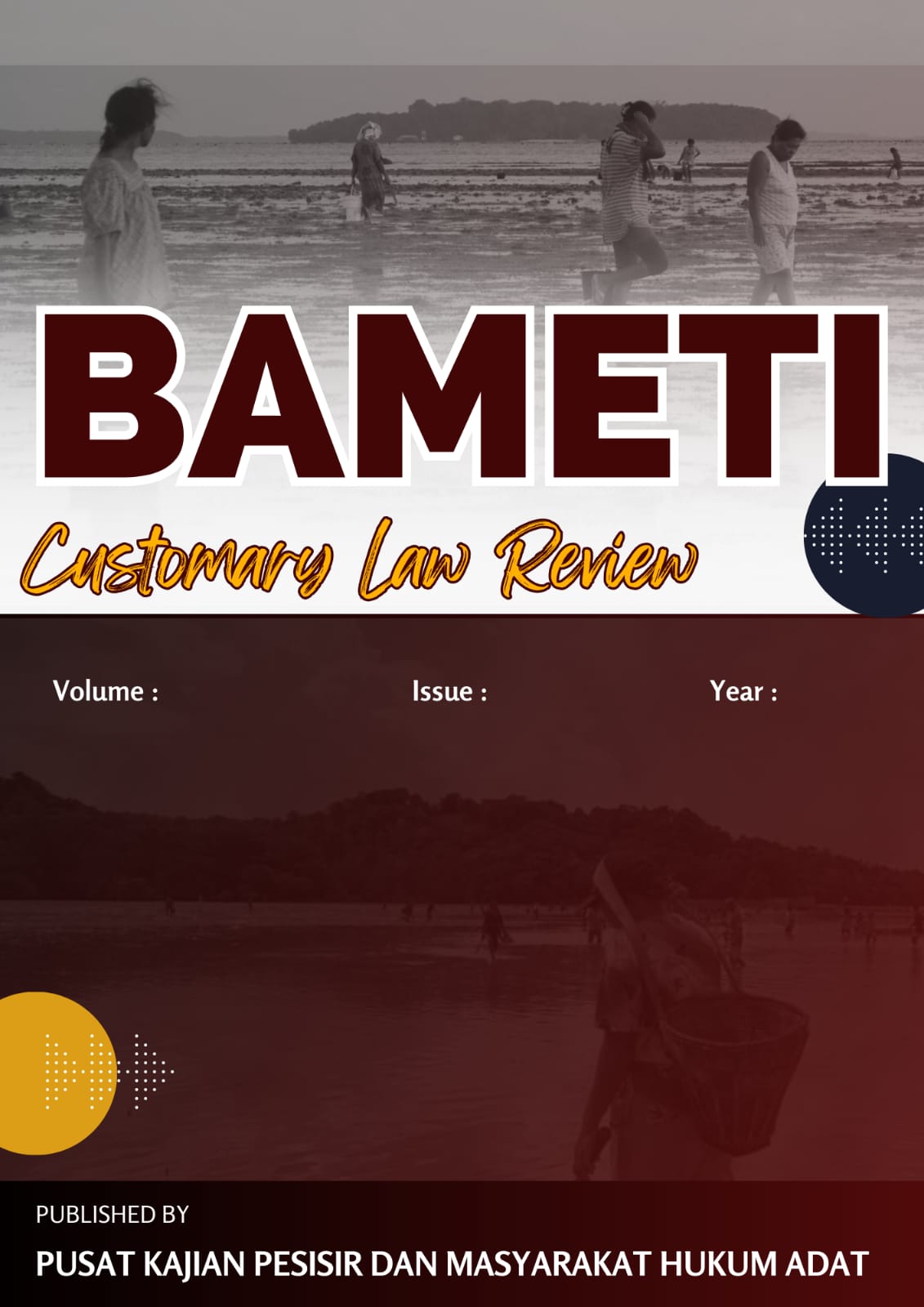Penguasaan Dan Kepemilikan Hak Atas Tanah Menurut Hukum Adat Larvul Ngabal
Abstract
Customary law develops following the development of society and existing folk traditions. Customary law is a deposit of decency in a society whose truth is recognized in that society. Purposes of the research: 1. To find out and analyze how land rights are regulated based on Larvul Ngabal Customary Law. 2. To find out and analyze the obstacles to enforcing Larvul Ngabal customary law. Methods of the research: Normative Juridical Law is used as a type in this study. This type of research in a normative juridical manner conducts studies originating from legal materials, doctrines, principles, legal principles, as well as positive legal provisions that aim to answer the legal issues being studied. Another name for normative research is doctrinal legal research which is commonly called library research because the purpose of this research is written regulations or other legal materials. The results of the study show that the contents of the Larvul Ngabal Law do not specifically regulate the regulation of land rights, control and ownership of land parcels by the Kei indigenous people, which are regulated by each Orong Kai (Head of Ohoi) and Head of Marga based on the regulations in force within the indigenous peoples. . The regulations for each Ohoi regarding land tenure and ownership existed long before the Larvul Ngbal Law existed. Obstacles in upholding larvul Ngabal customary law, namely with the development of the era the habits and understanding of indigenous peoples faded, making it difficult for customary functionaries to apply customary law, apart from that, there was no support from the local government in this matter to form a regional regulation that supports the implementation of the law. customs related to land rights.
Downloads
References
Arliman Lauriens S, 2015 Penegakan Hukum Dan Ksedadaran Masyarakat, Budi Utama, Yogyakarta.
Ary Sadewo, Dkk, Status Kepemilikan Tanah Adat Yang Didaftarkan Secara Sporadik Di Kota Tual, (Volume 5, Widya Yuridika, 2022)
Arba H.M, 2015, Hukum Agraria Indonesia, Sinar Grafika, Jakarta
Bewa Ragwino, Pengantar dan Asas-Asas Hukum Adat Indonesia (Jakarta: FIS & IP UP, 2009),
Bukido Rosdalina, 2017, Hukum Adat, CV Budi Utama, Yogyakarta.
https://id.wikipedia.org/w/index.php?title=Hukum_Larvul_Ngabal&veaction=edit
Loupatty Priska Irvine, 2008 Keragaman Sistem Hukum Pertanahan Lokal Terhadap Pendaftaran Tanah, STPN, Yogyakarta
Matuankotta Jenny Kristiana, Eksistensi Masyarakat Hukum Adat Dalam Mempertahankan Sumber Daya Alam,https://fhukum.unpatti.ac.id/(diakses pada : 18 Maret 2023. Pkl. 00.00)
Musukibah, Kedudukan Hukum Adat Dalam System Hukum Indonesia (jambi: metro jambi.com, 2019)
Ragwino Bewa, 2019, Pengantar dan Asas-Asas Hukum Adat Indonesia FIS & IP UP, Jakarta.
Soekanto Soerjono dan Sri Mamudji, 2004 penelitian Hukum Normatif, Cetakan Ke-8, Raja Grafindo Persada. Jakarta.
Yudi wahyudin dan mahifal.Electronic. 2012. Mengenal Hukum Adat 'Larwul Ngabal' Masyarakat Kepuluan Kei Maluku Tenggara papers.ssrn. Volume 3 (3), halm 31
Yudi wahyudin dan mahifal.Electronic, copy available at:http://ssrn.com/abstract=2166163 (diakses pada 4 juli 2022 pkl 02.28)
Yusuf salamat. 2026. Pengaturan mengenai hak atas tanah masyarakat hukumadat.https://ejurnal.peraturan.go.id/index.php/jli/article/viewFile/88/pdf (diakses pada : 6 juli 2022 pkl. 20.06)
Copyright (c) 2023 Ahmad Muhajir Rumaf, Jenny Kristiana Matuankotta, Muchtar Anshary Hamid Labetubun

This work is licensed under a Creative Commons Attribution-NonCommercial 4.0 International License.
Authors who publish their manuscripts in this Journal agree to the following conditions:
- The copyright in each article belongs to the author, as well as the right to patent.
- Authors are able to enter into separate, additional contractual arrangements for the non-exclusive distribution of the journal's published version of the work (e.g., post it to an institutional repository or publish it in a book), with an acknowledgment of its initial publication in this journal.
- Authors are permitted and encouraged to post their work online (e.g., in institutional repositories or on their website) prior to and during the submission process, as it can lead to productive exchanges, as well as earlier and greater citation of published work.
- Authors have the right to self-archiving of the article (Author Self-Archiving Policy)













